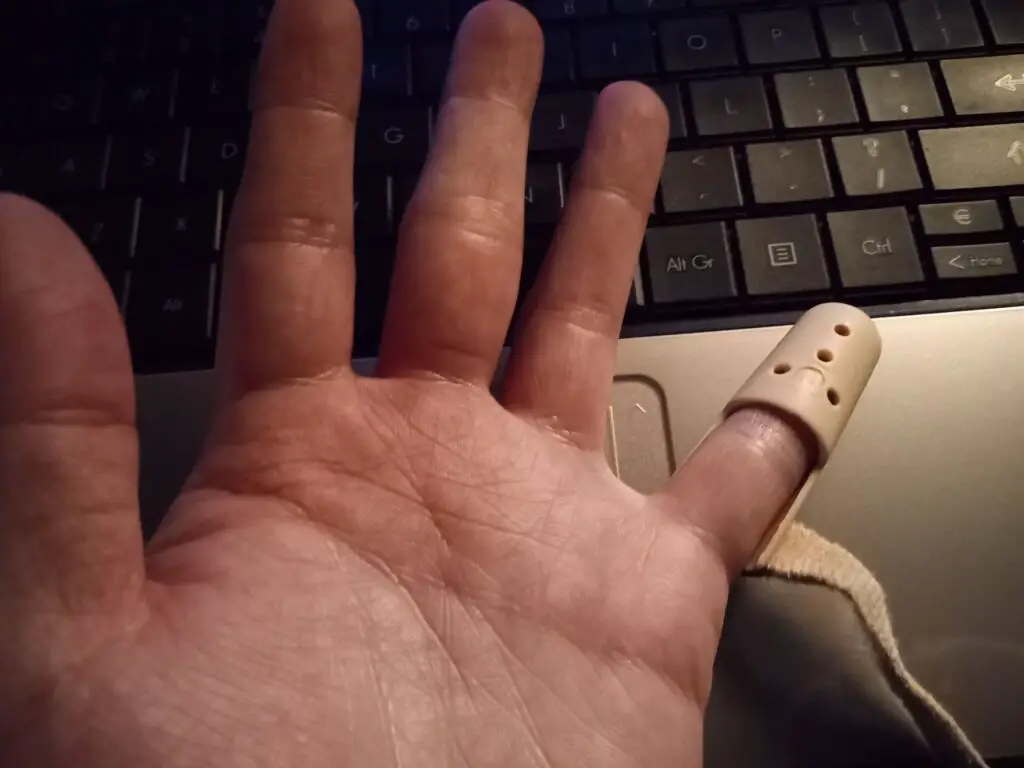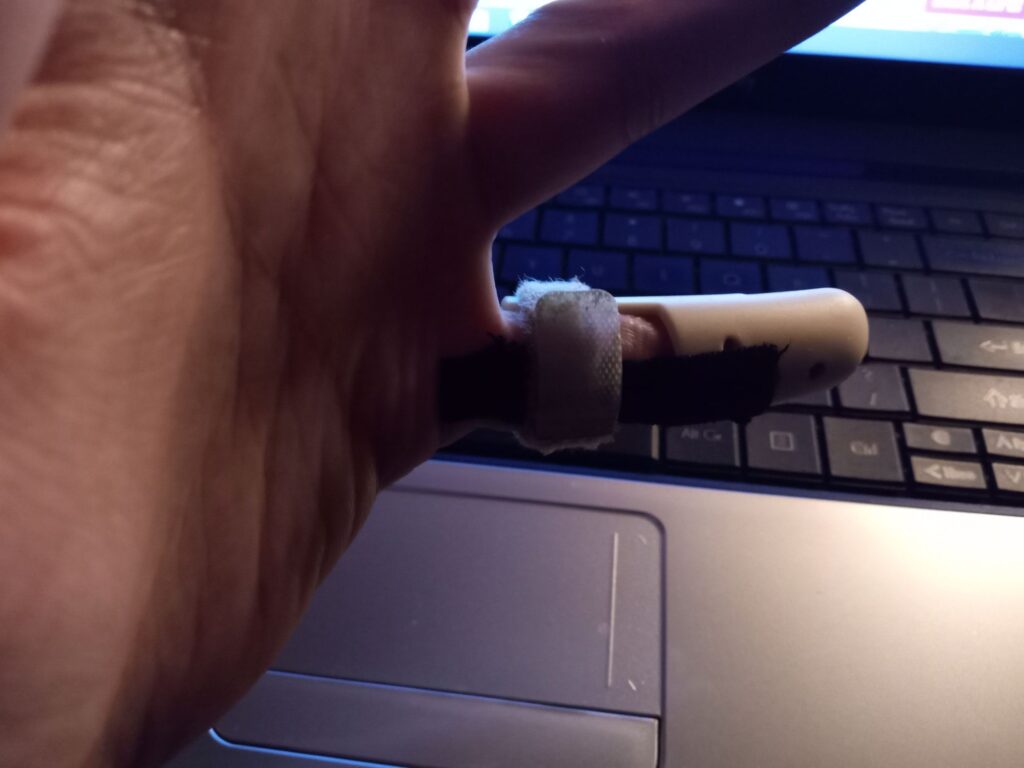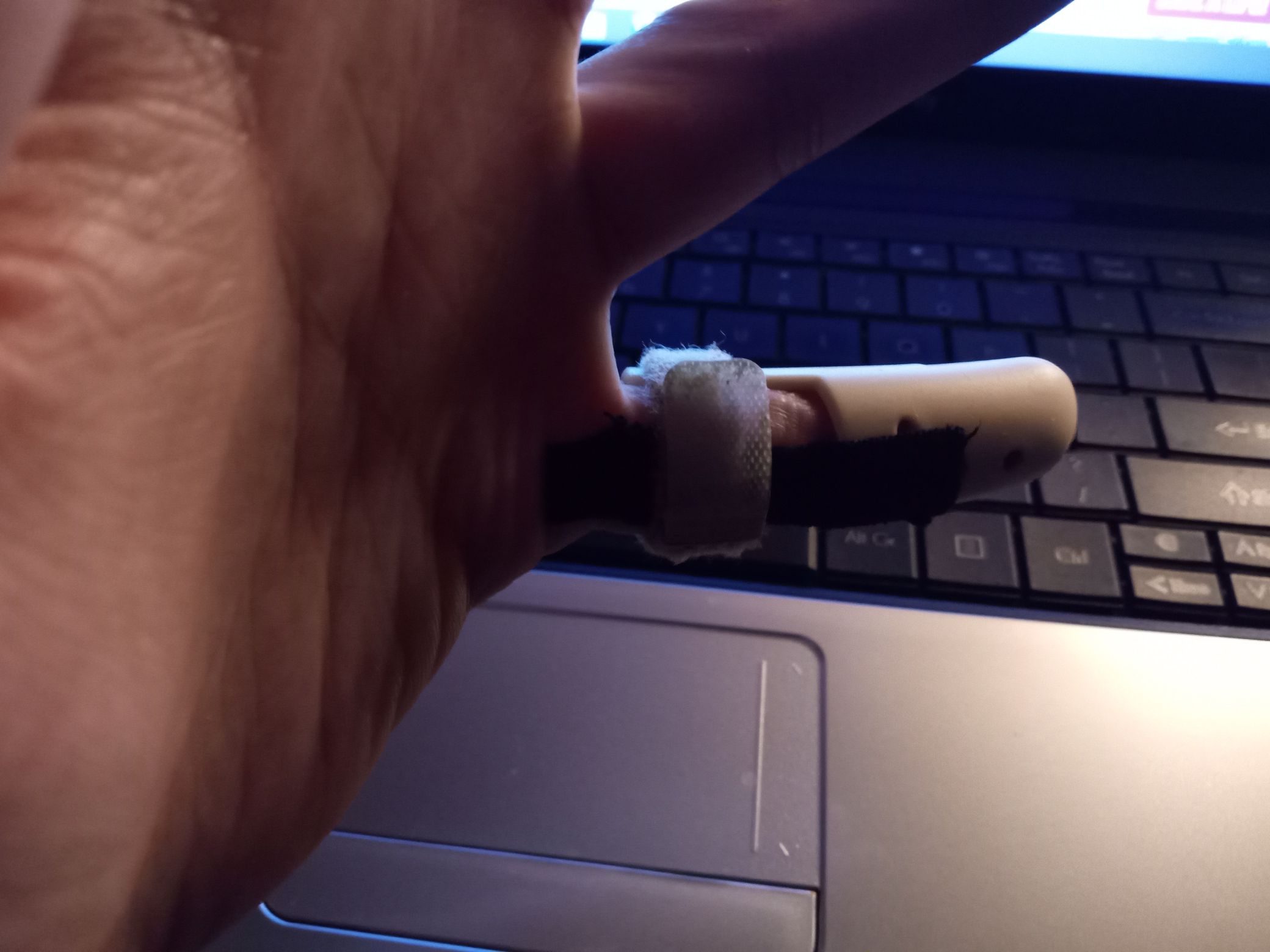Doing this will prevent the splint from sliding off.
A couple of years ago on a bike ride, I unknowingly injured a tendon on my pinky where I could no longer bend it up.
Although misdiagnosed by my general practitioner as a trigger finger, I got a second opinion from an orthopedic surgeon I was also seeing and correctly diagnosed it as a mallet finger.
The most common treatment for mallet fingers is splinting for up to 8 weeks.
If you’re reading this blog post and, as you already know, the hardest part about splinting a finger for so long is the likelihood the splint will fall off.
You roll around in your sleep, you wake up, and discover your splint is on the floor and your finger is bent…again.
You have to start over.
Thankfully, I figured out a way to secure the splint so it doesn’t slide off, even during sleep or exercise (I wore my finger splint like this while bike riding.)
Here’s what I bought, KT physio tape and this type of finger splint.

Note: official KT brand tape is the only kind of tape I found that works. Other types of injury tape do not stick as long and aren’t as comfortable.
First, choose the size finger splint that works, you’re going to be wearing it for several weeks.
Next, cut several, strips of KT tape. A couple of mm’s shorter than the splint will work.

Peel off the adhesive and prep a couple (maybe hang them off the edge of a table for easy ripping) for easy application. You’re only going to have one hand.
Slide on the finger splint, palm open.

Then, grab a piece of KT Tape and secure it like so before wrapping and securing the splint with velcro. Keep at least one hole open for ventilation.

Next, wrap and secure the velcro around the tape.

This is what it looks like secure.

And, that’s it!
When showering, it’s recommended to cover this finger with a plastic bag (like the one in the produce section, and wrap it with a rubber band.
You can do one of several things,
- you can attempt to keep it on like that for all 6-8 weeks
- you can lay your finger flat on a tabletop, unfasten the wrap (making sure your finger remains flat and doesn’t bend,) and replace the tape with a new piece after 2-3 weeks.
- Or, on top of replacing the tape, you can wipe your finger as best you can, making sure not to bend it, before you replace the tape for another 2-3 weeks.
I did daily bike rides and, after two weeks, my finger began to smell.
I laid my finger palm up on a table, carefully unfastened the velcro, removed the piece of KT tape, and wiped only the bottom of my finger clean with a baby wipe in this configuration.

I did not slide off the splint at all! Doing so would risk bending my finger, resetting the entire process.
If you don’t have baby wipes, some alcohol on a cotton ball or even a cue tip will work.
After cleaning my finger, I’d re-apply a fresh piece of KT tape.
A month in and you’ll probably need to cut your nail which you can manage without taking off the splint, just cut the nail, angling the nail cutter accordingly.
I kept my splint on for 9 weeks and, when I took my finger out, my finger muscle was atrophied and the finger stiff enough that it did not bend.
DO NOT force your finger to bend.
Although there are specific exercises you can do to reengage your finger to bend normally, I just didn’t wear my splint during the day and splinted at night.
During the day, I’d gently try to bend my finger on its own, and, little by little, I regained full control of my finger where I could bend it normally.
I do a lot of typing (like this blog) and typing without a splint forced my finger to ever so slightly bend on its own without straining it.
I think it took a month of no splint during the day and splinting at night.
Hopefully, this taping procedure will help with your mallet finger.
If you have any questions, let me know in the comments below and I’ll answer them ASAP.
